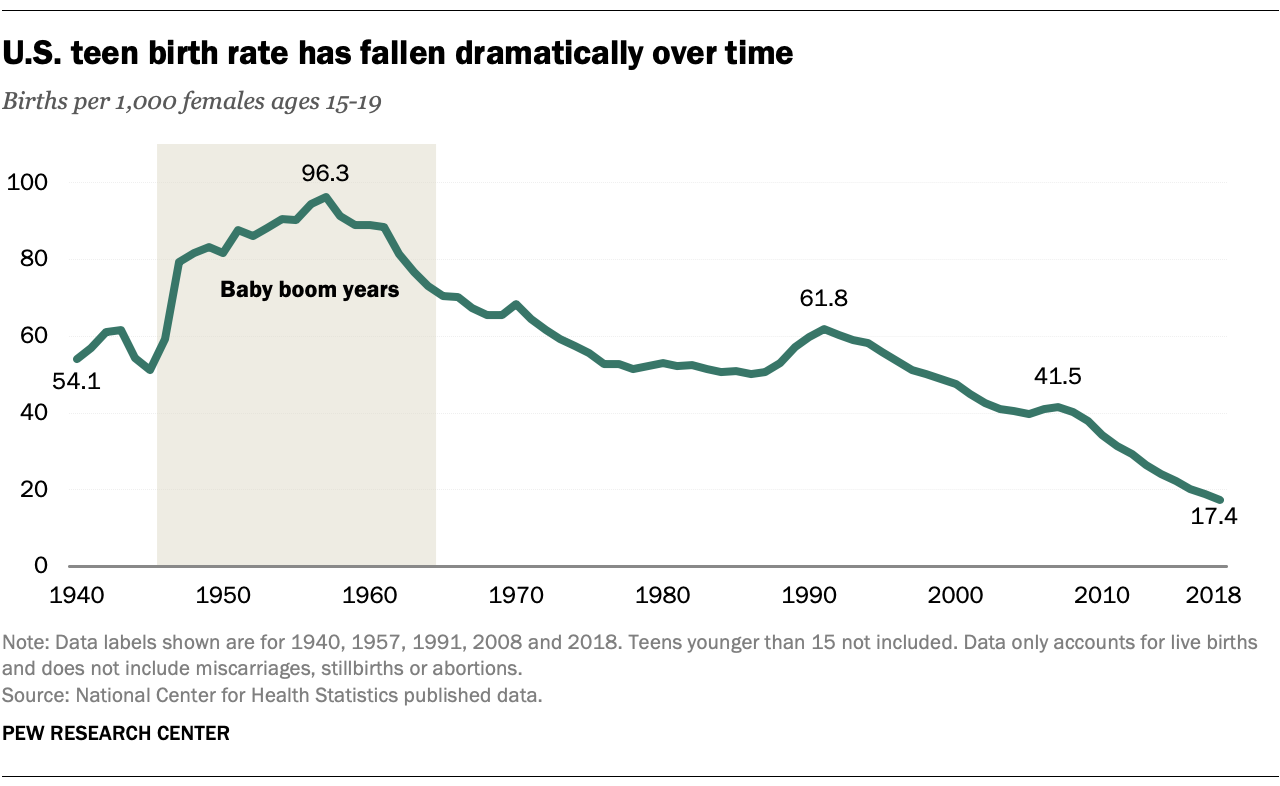
Teenage Pregnancy Statistics: A Comprehensive Overview
Introduction
Teenage pregnancy remains a significant public health concern, with far-reaching implications for both the young mothers and their children. Understanding the prevalence, risk factors, and consequences of teenage pregnancy is crucial for developing effective prevention and intervention strategies. This article presents a comprehensive overview of teenage pregnancy statistics in the United States, drawing on data from reputable sources such as the Centers for Disease Control and Prevention (CDC) and the National Center for Health Statistics (NCHS).
Prevalence of Teenage Pregnancy
According to the CDC, the teenage birth rate in the United States has declined significantly over the past few decades. In 2020, the birth rate among 15-19-year-olds was 18.8 per 1,000, down from 29.4 per 1,000 in 2007. However, despite this decline, the United States still has one of the highest teenage birth rates among developed countries.
Racial and Ethnic Disparities
Teenage pregnancy rates vary significantly across racial and ethnic groups. In 2020, the birth rate among Hispanic teenagers was 26.5 per 1,000, compared to 17.4 per 1,000 among non-Hispanic white teenagers and 22.3 per 1,000 among non-Hispanic black teenagers. These disparities highlight the need for targeted interventions to address the unique challenges faced by different population groups.
Risk Factors for Teenage Pregnancy
Numerous factors can increase the risk of teenage pregnancy, including:
- Early sexual initiation: Teenagers who begin having sex at a young age are more likely to become pregnant.
- Lack of access to contraception: Teenagers who do not have access to reliable contraception are more likely to engage in unprotected sex.
- Poverty and socioeconomic disadvantage: Teenagers living in poverty or facing socioeconomic challenges may have limited access to healthcare, education, and support services.
- Peer pressure and social norms: Teenagers who are surrounded by peers who are sexually active or who view teenage pregnancy as acceptable are more likely to engage in risky sexual behavior.
- Mental health issues: Teenagers with mental health issues, such as depression or anxiety, may be more likely to engage in risky sexual behavior.
Consequences of Teenage Pregnancy
Teenage pregnancy can have significant consequences for both the young mothers and their children.
Consequences for Young Mothers:
- Educational attainment: Teenage mothers are less likely to complete high school and college than their peers who do not become pregnant.
- Economic opportunities: Teenage mothers face significant barriers to employment and economic self-sufficiency.
- Health risks: Teenage mothers are at increased risk for pregnancy complications, such as premature birth and low birth weight.
- Mental health issues: Teenage mothers are more likely to experience depression and anxiety than their peers who do not become pregnant.
Consequences for Children:
- Health problems: Children born to teenage mothers are more likely to have low birth weight, developmental delays, and other health problems.
- Educational attainment: Children born to teenage mothers are less likely to succeed in school and have lower educational attainment than their peers.
- Social and behavioral problems: Children born to teenage mothers are more likely to experience social and behavioral problems, such as delinquency and substance abuse.
Prevention and Intervention Strategies
Preventing teenage pregnancy requires a comprehensive approach that addresses the underlying risk factors. Effective strategies include:
- Comprehensive sex education: Providing teenagers with accurate and age-appropriate information about sexual health and contraception can help them make informed decisions about their sexual behavior.
- Access to contraception: Ensuring that teenagers have access to affordable and reliable contraception is crucial for preventing unintended pregnancies.
- Support for families and communities: Providing support for families and communities can help create a positive environment for teenagers and reduce the risk of teenage pregnancy.
- Targeted interventions for high-risk groups: Identifying and providing targeted interventions for teenagers who are at high risk of pregnancy can help reduce disparities and improve outcomes.
Conclusion
Teenage pregnancy remains a significant public health concern in the United States. Understanding the prevalence, risk factors, and consequences of teenage pregnancy is essential for developing effective prevention and intervention strategies. By addressing the underlying risk factors and providing comprehensive support for teenagers and their families, we can help reduce the number of teenage pregnancies and improve the outcomes for young mothers and their children.